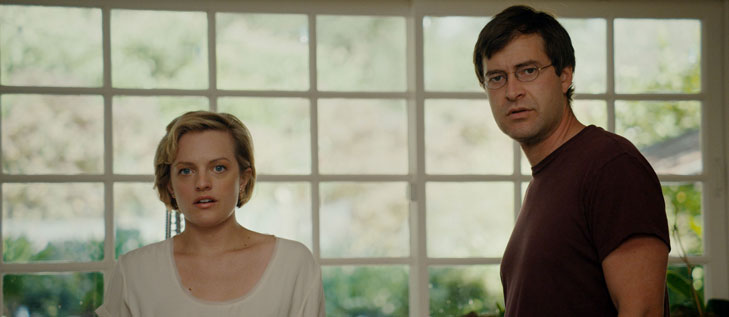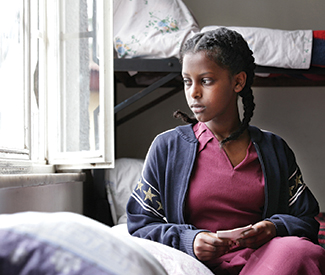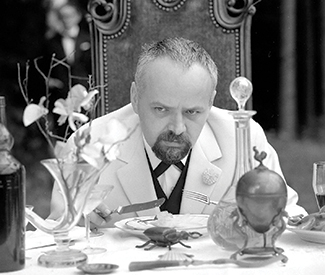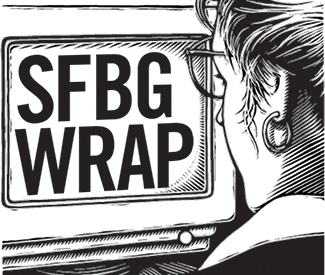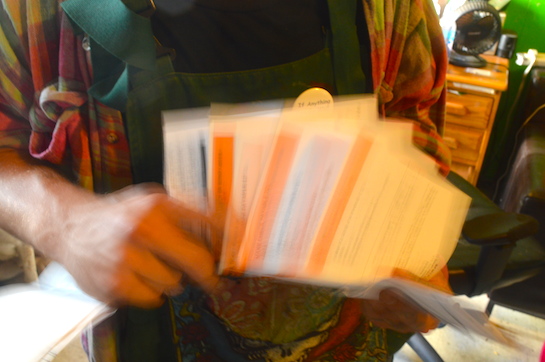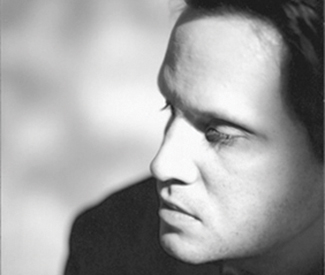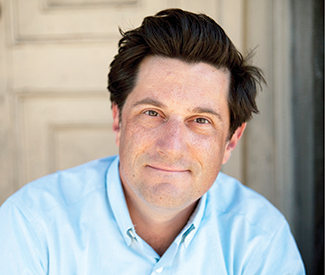TREAT SHEET It’s almost summer time: Forget about that diet — you’ve got bigger things to worry about than whether you can fit into that bathing suit! (How to score Outside Lands tickets, for instance, or how to get to three street fairs at once.) For our first annual Treat Sheet, we asked our readers, our staff writers, and Tablehopper restaurant guru Marcia Gagliardi for their favorite summer treats under $10 that represent the Bay Area’s delicious, locally sourced, mostly organic bounty. Grab your picnic basket and dig in.
PORK BELLY DONUTS WITH MAPLE SYRUP AND MAKERS MARK GLAZE, $5.75
Yes, these things are just as rich and decadent as they sound. (Just one order of three is probably all you and your date will need.) When pigs meet donuts, it’s serious business
The Sycamore, 2140 Mission, SF, www.thesycamoresf.com
SLOPPY BUN, $6.95
A flavor-packed and abundant sandwich of red curry ground beef, plus garlic mayo, jalapeno, Thai basil, and shaved onion. Be sure to pay an extra $1 for an egg on top. More is more.
Bun Mee, 2015 Fillmore, SF; 650 Market, SF; www.bunmee.co
LEMON COOKIE ICE CREAM, $4.25 FOR TWO SCOOPS ON A WAFFLE CONE
Get your cookies and ice cream fix in this light, lemony two-in-one dessert.
Three Twins, 254 Fillmore, SF. www.threetwinsicecream.com
NABOLOM CINNAMON TWIST, $2
It’s been years since we’ve lived down the street and could hit them up practically every day, but these cinnamon-sugar-doused bars of gold (er, perfectly crispy-flaky-chewy croissant dough) still appear in our dreams. Get ’em fresh out of the oven if possible; the crispy caramelized sugar edges will become your new white rabbit.
Nabolom Collective Bakery, 2708 Russell St, Berk. www.nabolombakery.com
BLUES ON THE COB, $4
Baby Blues BBQ in the Mission has a great assortment of barbecued meats, and we try to mix it up — but we never deviate from one of our favorite sides: fresh roasted corn on the cob smothered in blue cheese. Yum.
Baby Blues BBQ, 3149 Mission, SF, babybluessf.com
EL FRIJOLAZO HOT DOG, $6.95
Guatemalan hot dogs, people. And believe us, you’ve never had a bacon-wrapped dog like this. The fresh-baked and toasted bun comes slathered with refried black beans, avocado, a Latin spin on mayo, and queso fresco. Finish with a squirt of the green salsa chapina on top.
Los Shucos, 3224 22nd St, SF. www.losshucos.com
MATEVEZA YERBA MATE IPA, $6
Need a buzzy kick? The folks at Cerveceria de Mateveza café near Dolores Park combined all the kick of caffeinated Argentinean necessity yerba mate with the downhome goodness of locally brewed craft beer. Olé.
Cerveceria de Mateveza, 3801 18th St., SF. www.cerveceriasf.com
PRETZEL CROISSANT, $3.50
Yeah, it’s just like it sounds: amazing. A dark-baked croissant topped with pretzel salt, ready to melt you. Fresh out of the oven every day at 11:30am.
Arlequin, 384 Hayes, SF. www.arlequincafe.com
BUFFALO BOYS, $8.50
Fried catfish in buffalo sauce, dipped in blue cheese dressing. ‘Nuff said. You could also save a buck and get the Buffalo Girls, made with seitan instead of catfish. (But why?)
Dante’s Weird Fish, 2193 Mission, SF. www.weirdfishsf.com
THOROUGH BREAD APPLE GALETTE, $2.15
Ooh la la: authentic French bakery Thorough Bread near the Castro overflows with goodies worth rising early for. But we’re saving our biggest oui oui for these delightful apple-filled pastries. Not too sweet, but your sweet tooth will thank you.
248 Church, SF. www.thoroughbreadandpastry.com
ROOSEVELT CAESAR SALAD, $10
This is one hell of a Caesar, the crisp leaves of Romaine are positively coated with the oh-so-creamy dressing, all topped with a mountainous flurry of Parmesan.
Roosevelt Tamale Parlor, 2817 24th St, SF. (415) 824-2600
ESPERPENTO GAMBAS AL AJILLO, $7
This may be the single garlickiest dish we’ve found in the city, which therefore makes it awesome. Just one order of these babies — tender shrimp drowns in garlic sauce — and a couple baskets of bread to sop up every last drop of juice. You can run on the fumes for hours.
Esperpento, 3295 22nd St., SF, www.esperpentorestaurant.com
THE REBEL WITHIN, $7.50
This stealthy treat consists of a poached egg, bacon, and scallions baked into an otherwise normal-looking savory muffin. And they even seem to get the yolk right each time, running out perfectly as you cut into it.
Craftsman and Wolves, 749 Valencia, SF, craftsman-wolves.com
STARBELLY HOUSEMADE CHICKEN LIVER PATE, $10
This ain’t your grandma’s chicken liver — this is pure buttery goodness. Spread it on toasted bread with sweet onion marmalade and grain mustard, and it’ll warm your soul.
Starbelly, 3583 16th St, SF. www.starbellysf.com
PLANTAIN BURRITO, $7.25
If you’re a carnivore, this burrito will make you consider a conversion to vegetarianism. If you’re a vegetarian, you’re welcome.
Cuco’s, 488 Haight, SF (415) 863-4906
HASH BROWN SANDWICH, $6.55
A genius breakfast item from the Inner Richmond: imagine a folded taco of crisp hash browns, with cheese, bacon (or sausage, or ham and onions) inside, and eggs and toast on the side. Boom.
Art’s Café, 747 Irving, SF. www.artscafe.com
KINAKO MOCHI, $1.35
You might not be able to eat just one, and you might want to try an assortment of mochi treats — but start with this fresh green mochi with red bean filling from a true Japantown classic.
Benkyodo Co., 1747 Buchanan, SF. www.benkyodocompany.com
FENNEL AND SUN-DRIED TOMATO LAMB SAUSAGE, $7
It’s like a ballpark hot dog all dressed up with a gourmet twist. Comes with two free toppings, like sauerkraut, grilled onions, or sweet peppers. It is so perfect with beer!
Rosamunde Sausage Grill, various locations, SF.
TAYLOR’S TONICS’ CHAI COLA, $2
All the healthful goodness of chai — in cola form. The local heroes at Taylor’s Tonics have seen this unlikely but wondrous taste combo take off nationally. (You can get it at CostCo!) But the best place to procure this invigoratingly fizzy beverage is at one of Taylor’s Fizzary soda stores.
The Fizzary, 2949 Mission, SF; 1782 Haight, SF. www.taylorstonics.com
LENTIL AND YAM PIE, $3.55
Wholesome, fresh, and flavorful, try the vegan lentil and yam pocket pie, seasoned with cumin and onion. It’s simply good and healthy for your wallet, too.
Peasant Pies, multiple locations. www.peasantpies.com.
GREEN CHILE STEW $5; HOUSE SPECIALTY PIE, $8
Cross over to the savory side of the menu at this oasis of organic goodness. Try the pork, chicken, or veggie versions of the signature green chile stew. The cross back over to sweetness — with a kick — and dive into a slice of Green Chile’s house specialty pie: apple a la mode with a generous drizzle of red chile honey. Good lord.
Chile Pies Sweet and Savory, 314 Church, SF. (415) 431-9411 www.greenchilekichen.com
HONEYDEW SHAKE WITH PEARL, $3.25
When confronted with the list of pearl shake options, you might be tempted to just go for it and ask for the durian shake with pearl or the guyabano shake with pearl. But if you want sweet heavenly goodness to counterbalance a bowl of fiery noodles, take it from us that ordering the honeydew shake with pearl is the wisest move of all.
Kevin’s Noodle House, various locations. www.kevinnoodlehouse.com
TAO YEUN BAKED BBQ PORK BUN, LESS THAN $1
They are baked, they are filled with BBQ pork, and they are buns. You can find them practically anywhere in the bay. But there is good reason why everyone raves about these glazed clouds of perfection on the Internet. Pick up some sesame balls while you’re at it, why don’t you?
Tao Yeun Pastry, 816 Franklin, Oakl. (510) 834-9200
TU LAN #17, $7.45
No matter what Twitter has done to “clean up” (sweep homeless folks out of) the neighborhood, the real protests will begin when something threatens Tu Lan, the mother of all cheap, delicious Vietnamese noodle purveyors. The #17 pork kebab with imperial roll and rice noodles — a blend of sweet and spicy fried goodness — has cured many a hangover, and tops our pork kebab list. Long may she reign.
Tu Lan, 8 Sixth St, SF. www.tulan-vn-restaurant.com
PANNA GELATO WITH EXTRA VIRGIN OLIVE OIL AND SEA SALT, $7
Don’t be fooled by the odd-sounding flavor clash — servers will tell you flat-out that this decadent combination of sweet, creamy gelato, and light, fruity olive oil, accented with rock salt, is the best thing on the menu. We’re gladly working our way through all the items to find out.
Beretta, 1199 Valencia, SF. www.berettasf.com
PUERTO ALEGRE CHILAQUILES, $6.85
These fried tortilla slices scrambled with eggs and sauteed with a tasty red or green sauce are a magic hangover cure. Wash down with a house margarita — or, hell, a pitcher — to do it all over again. (Only on the weekend breakfast menu.)
Puerto Alegre, 546 Valencia, SF (415) 255-8201
CHILLED TRIPE “TRIPPERIA STYLE,” $8.50
This tripe is truly something special — it’s tender and served chilled, with lemon, chile oil, and sea salt (you get to decide how much to put on of each ingredient). A favorite of those who especially dig tripe or feeling incredibly Italian.
Pizzeria Delfina, various locations. www.pizzeriadelfina.com
MACARON ICE CREAM SANDWICH, $5
The delicate flavor of French macarons … the creamy sumptuousness of ice cream … the ungodly gobbling noise as you wolf it all down! Available in red velvet, chocolate chocolate, or “vanilla birthday.”
Cako, various locations. www.cako.com
MARLA BAGEL WITH HERBED FARMER’S CHEESE, $5
There are bagels, and then there are these amazing bagels baked by Amy Brown. Some of the best in the city, don’t miss ’em.
Marla Bakery Kitchen Communal, 613 York, SF. www.marlabakery.com
BUCKWHEAT WAFFLE, $9
This savory waffle also comes with crème fraîche, cucumber, and trout roe on top. Elegant! Brilliant for brunch.
Lt. Waffle at Linea Caffe, 3417 18th St., SF. www.lineacaffe.com
TROU NORMAN COPPA, $7
Some of the silkiest coppa you’ve ever had will be found here. There are actually about 14 kinds of housemade salumi for you to choose from, all $7 and under.
Trou Normand, 140 New Montgomery, SF. www.trounormandsf.com
CAFÉ VAN KLEEF GREYHOUND, $7
Feel a cold coming on? Get your daily dose of vitamin C and your weekly allotment of vodka with a fresh-squeezed grapefruit greyhound — featuring a stiff pour and a whole quarter of a grapefruit as a wedge — at this beloved, old-school Oakland spot.
Cafe Van Kleef, 1621 Telegraph, Oak. www.cafevankleef.com
WISE SONS NOODLE KUGEL, $3.50
Totally not fair to put this contemporary version of a Jewish standby on this list — it is a figurative brick of delish, sweet noodles cooked into a heavy square topped with crumble and served in a puddle of berry sauce.
Wise Sons Deli, 3150 24th St, SF. www.wisesonsdeli.com
CHEDDAR CHEESE GRILLED SANDWICH, $9.75
This is one cheesy sandwich, filled with Shelburne Farms and Fiscalini cheddar with sage and apples on house-baked kale whole wheat bread. Just beyond.
Le Marais, 2066 Chestnut, SF. www.lemaraisbakery.com
LIGURIA BAKERY PIZZA FOCACCIA, $5
If you manage to get to North Beach’s justly-famed Liguria early — very early — enough, you’ll be rewarded with soft, spongy, fabulously oily tomato bomb focaccia, sprinkled with green onions on top.
Liguria Bakery, 1700 Stockton, SF. (415) 421-3786
BUFFALO WINGS, $10
Or you can have Angry Korean wings, or dry rub, or seven other kinds, 10 flappers for just $10. Yeah, and it’s quality chicken too: air-chilled Mary’s birds. Piping hot and finger lickin’ good.
Wing Wings, 422 Haight, SF. www.wingwingssf.com
BACON BACON BANH MI, $8
This killer banh mi comes stuffed with pork and bacon patties, pickled vegetables, jalapenos, cilantro, and sriracha mayo. Good stuff, served specially from the Bacon Bacon café or truck.
Bacon Bacon, 205 A Frederick, SF. www.baconbaconsf.com
THE AUTHENTIC BANH MI, $5
Just try to find a bigger banh mi at that price. Comes with roasted pork belly, roasted five-spice pork shoulder, housemade headcheese, and Vietnamese pork sausage, plus a slew of vegetables. Grab some napkins.
Mission Banh Mi in Duc Loi, 2200 Mission, SF. www.ducloi.com
FROZEN GREEK YOGURT, $4–$5
Move over fro-yo, this tangy number is going to steal the show. Baklava crumbles on top with syrup, are you kidding? Or how about olive oil and flaky sea salt? Greek sour cherry syrup? However you want it, here in Hayes Valley.
Souvla, 517 Hayes, SF. www.souvlasf.com
THRICE-COOKED FRIES, MANIMAL STYLE, $7
These fries are bonkers: They’re thick and hot, and come smothered in “doggie sauce” (housemade aioli with ketchup, sriracha, and chow chow relish), shredded cheddar cheese, charred scallion, and a sprinkling of piment d’Espelette for extra kick.
Trick Dog, 3010 20th St., SF. www.trickdogbar.com
BANANA CREAM TART, $7.25
Pretty much the benchmark for banana cream pie in town. Almost too good with that touch of dark chocolate and caramel. Almost.
Tartine Bakery, 600 Guerrero, SF. www.tartinebakery.com
TURTLE TOWER PHO GA, $8.25
One of the finest chicken noodle dishes in the city, this enormous bowl of pho will cure whatever ails you: hangover, cold, or just hunger. Perfect for fog-drenched afternoon.
Turtle Tower, various locations. www.turtletowersf.com
PORK BELLY BAO, $6.75
Imagine a tender baked bun, stuffed with pork belly, turmeric-pickled daikon, and green shiso. (Or you can get it in a steamed bun for $3.75.)
The Chairman Truck, www.thechaimantruck.com
LA TORTA GORDA TINGA TORTA, $9.25
This torta can last you the entire day and then some; this monster is stuffed with shredded chicken stewed in chipotle and onion, refried beans, avocado, queso fresco, onions, mayo, and jalapenos. A junior is $6.95, and plenty.
La Torta Gorda, 2833 24th St, SF. www.latortagorda.net
CRANKSHAFT SANDWICH, $10
An excellent tuna melt, this one comes with a decadent mayonnaise-based tuna salad made with albacore, plus house pickles, Shelburne cheddar, and arugula to lighten it up a little.
Machine, 1024 Market, SF. (415) 913-7370
DECONSTRUCTED SAMOSA, $7
This dish is a crazy mountain of garbanzos, a meat or tofu of your choice, pico de gallo, chutney, and crispy sev noodles on top, plus mini samosas on the side. Delicious confusion.
Curry Up Now, 659 Valenica, SF. www.curryupnow.com
WHITE SPINACH SLICE, $4
This unassuming pizza shop in the Mission makes one hell of a New York-style slice, and the white spinach slice (spinach, ricotta, mozzarella, Parmesan, garlic) is rich and tasty. Great crisp crust.
The Pizza Shop, 3104 24th St, SF. (415) 824-1840
BEEP’S PINEAPPLE SHAKE, $3.50
This creamy, citrusy, brainfreezing rush is a legend — people have been talking about it for generations. The rest of the Ingleside diner’s menu is your basic ’50s throwback drive-through diner fare (plus teriyaki bowls), but the shake goes down well with some salty fries.
Beep’s Burgers, 1051 Ocean Avenue, SF. (415) 584-2650
TONKOTSU KOTTERI RAMEN, $8.45
Some of the richest pork broth you’ll find, this bowl of ramen also comes with black garlic oil. It’s fatty and decadent and something you should try at least once.
Ramen Yamadaya, 1728 Buchanan, SF. www.ramen-yamadaya.com
BEEF PHO ROLLS, $8
Swing by this happening Vietnamese cafe for weekend brunch and don’t pass up these rolls of tender rice noodles (made fresh!) with ground beef and Thai basil inside.
Rice Paper Scissors, 1710 Mission, SF. www.ricepaperscissors.com
CHINESE MAI TAI, $9
Nothing says hot summer nights like a great big cup of “erase your brain.”
Li po Lounge, 916 Grant, SF. www.lipolounge.com
OLD JERUSALEM HUMMUS, $7.50
Not only do you get a platter of pitch-perfect hummus, but you get a bowl of fluffy, warm pita — plus pickled beets, olives, a couple more dips, and some old-school charm.
Old Jerusalem, 2976 Mission, SF. (415) 642-5958
CANCUN SUPER NACHOS, $5.99
Sure, Taqueria Cancun’s tortilla chips are notoriously meh, but the perennially popular spot loads so many toppings onto these overflowing nachos that you’ll hardly notice. (You can add meat for $2.)
Taqueria Cancun, 2288 Mission, SF. (415) 252-9560
BISCUIT BENDER BISCUIT AND BUTTER, $3.50–$4
Take your pick of buttermilk biscuits, from double bacon-maple to cheddar to Mexican hot chocolate, and add on special butters like espresso butter, or bacon-bourbon jam.
Biscuit Bender, Ferry Building Marketplace, 1 Ferry Building, SF. www.biscuitbender.com
BEST DAMN GRASS-FED CHEESEBURGER, $8.75; FRANKARONI $5
The burger at this new Divis hotspot lives up to its name, with a housemade sesame-scallion bun, dry-aged meat, secret sauce, Gruyere, red onion, and lettuce. You can add housemade bacon for $1.25, or an egg for $2. And hey! Why not pick up another perfect summer treat: A side of frankaroni, basically fried mac and cheese with hot dog inside, is five dollars.
4505 Burgers & BBQ, 705 Divisadero, SF. www.4505meats.com
YUZU CHICKEN WINGS, $9.50
These are some mighty juicy chicken wings, with a flaky exterior (they’re fried in potato starch); get them for $6 during happy hour (Monday through Friday from 5:30pm–6:30pm).
ICHI Sushi + NI Bar, 3282 Mission, www.ichisuchi.com
EL DORADO TACO, $3.75
These off-menu tacos at La Taqueria are like the precursor to the chalupa. A crispy taco is folded within a soft one, and melted cheese holds the two together. Magic. You have to get the carnitas, of course (it also comes with beans). And it’s worth ponying up for some guacamole on top.
La Taqueria, 2889 Mission, SF. (415) 285-7117















